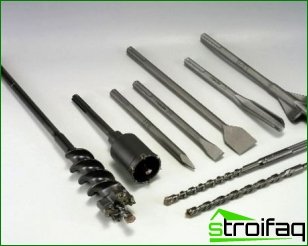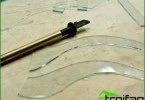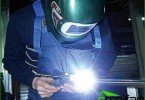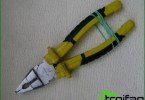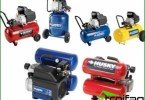The drill is considered a special cutting device that distinguishes rotational movement of cutting and axial feed. With it, holes are made in the solid material, the diameter of the hole increases, and if desired, deepenings of the desired characteristics are obtained. let’s get a look, how to choose the right drill.
Professionals classify the whole set of drills into two types: feather and spiral. Each variety has both strengths and weaknesses. Spiral drills are especially popular among buyers. They are made similar to a cylinder rod, in which two spiral grooves are located on the sides of the working part. They serve for chip removal. In various types of drills, the groove can be tilted at an angle of 10 to 45 degrees. The working end of the drill is made in a shape resembling a cone. In helical drills, shanks are cylindrical, hexagonal or have a conical shape.
These types of drills feature a long service life and an excellent indicator of reliability. Now let’s talk about their weaknesses, here we can attribute an exceptionally high price.
Drills of a feather type and their indicators
Perforated drills are sometimes called flat. Their design is particularly simple, in addition, they are quite affordable, and during operation, their distortion is quite rare. Distinguish between bilateral and one-sided drill type feather. This classification depends on the shape in which their cutting edges are sharpened..
Drills of the first variety on the cutting site are provided with two edges symmetrically located along the axis. When cutting, they allow you to get angles of 45, 50, 75 or 90 degrees. To measure the diameter of the drill just find out how wide the blade is. The diameter of the drill determines the thickness of the pen, on which the cutting ribs depend.
The transverse edge is a straight line formed at the intersection of the cutting ribs. When using perforated drills during work, it is impossible to achieve automatic chip removal during drilling operations, which results in the fact that the cutting edges lose their original characteristics, and the drill will often need to be removed from the hole. When using punch drills, they can lose their direction, and with their regrinding, the diameter decreases.
Determine the drilling speed
The drill is considered a special cutting device that distinguishes rotational movement of cutting and axial feed. With it, holes are made in the solid material, the diameter of the hole increases, and if desired, deepenings of the desired characteristics are obtained. let’s get a look, how to choose the right drill.Professionals classify the whole set of drills into two types: feather and spiral. Each variety has both strengths and weaknesses. Spiral drills are especially popular among buyers. They are made similar to a cylinder rod, in which two spiral grooves are located on the sides of the working part. They serve for chip removal. In various types of drills, the groove can be tilted at an angle of 10 to 45 degrees. The working end of the drill is made in a shape resembling a cone. In helical drills, shanks are cylindrical, hexagonal or have a conical shape.
These types of drills feature a long service life and an excellent indicator of reliability. Now let’s talk about their weaknesses, here we can attribute an exceptionally high price.
Drills of a feather type and their indicators
Perforated drills are sometimes called flat. Their design is particularly simple, in addition, they are quite affordable, and during operation, their distortion is quite rare. Distinguish between bilateral and one-sided drill type feather. This classification depends on the shape in which their cutting edges are sharpened..
Drills of the first variety on the cutting site are provided with two edges symmetrically located along the axis. When cutting, they allow you to get angles of 45, 50, 75 or 90 degrees. To measure the diameter of the drill just find out how wide the blade is. The diameter of the drill determines the thickness of the pen, on which the cutting ribs depend.
The transverse edge is a straight line formed at the intersection of the cutting ribs. When using perforated drills during work, it is impossible to achieve automatic chip removal during drilling operations, which results in the fact that the cutting edges lose their original characteristics, and the drill will often need to be removed from the hole. When using punch drills, they can lose their direction, and with their regrinding, the diameter decreases.
Determine the drilling speed
To choose the right drill, it is necessary to correctly determine the drilling speed. Maximum productivity will be achieved only when the combination of drill speed and feed is optimal. Rotational speed is measured by the number of revolutions per minute. Speed can be defined as the path that the outer parts of the cutting edge travel in a minute.
Many people believe that the optimum cut speed during drilling is a speed that allows you to work for a long time and does not require re-grinding (up to one and a half hours) with high productivity. If the drill has a diameter of up to two centimeters, then they can do the job for 15 minutes. If the diameter is 25-35 millimeters – 30 minutes, if this figure exceeds 40 millimeters, then the tool will perform its functions without regrinding for up to 90 minutes.
When drilling with an acceptable cutting speed, it will largely depend on the quality of the material used to create the drill. It is logical that choosing this accessory, it is important not to take the time to determine the quality of the material that was used for its production. When using high-speed steel, the cutting speed will be higher compared to drills made of carbon metal.
Drill diameter and drilling depth are important features
When choosing a drill, it is important to determine the desired drilling depth. Note that with the increase of this characteristic, the problem of chip removal becomes more urgent, the friction index increases, which contributes to the heating of cutting edges. Therefore, when drilling holes of small depth, the speed will be higher than for holes with greater depth.
It is important to consider the purpose assigned to the holes. They can be end-to-end, blind, for reamer or made under the thread. It is noteworthy that in each of the above cases, in order to get a hole with the same diameter, you need to use drills whose thickness is different. This is due to the fact that, in contact with the edges, the drill increases the size of the hole. We saw the basic rules that will help in the selection of drills. Now, nothing prevents you from going to the construction store and picking up the components necessary for your drill.
